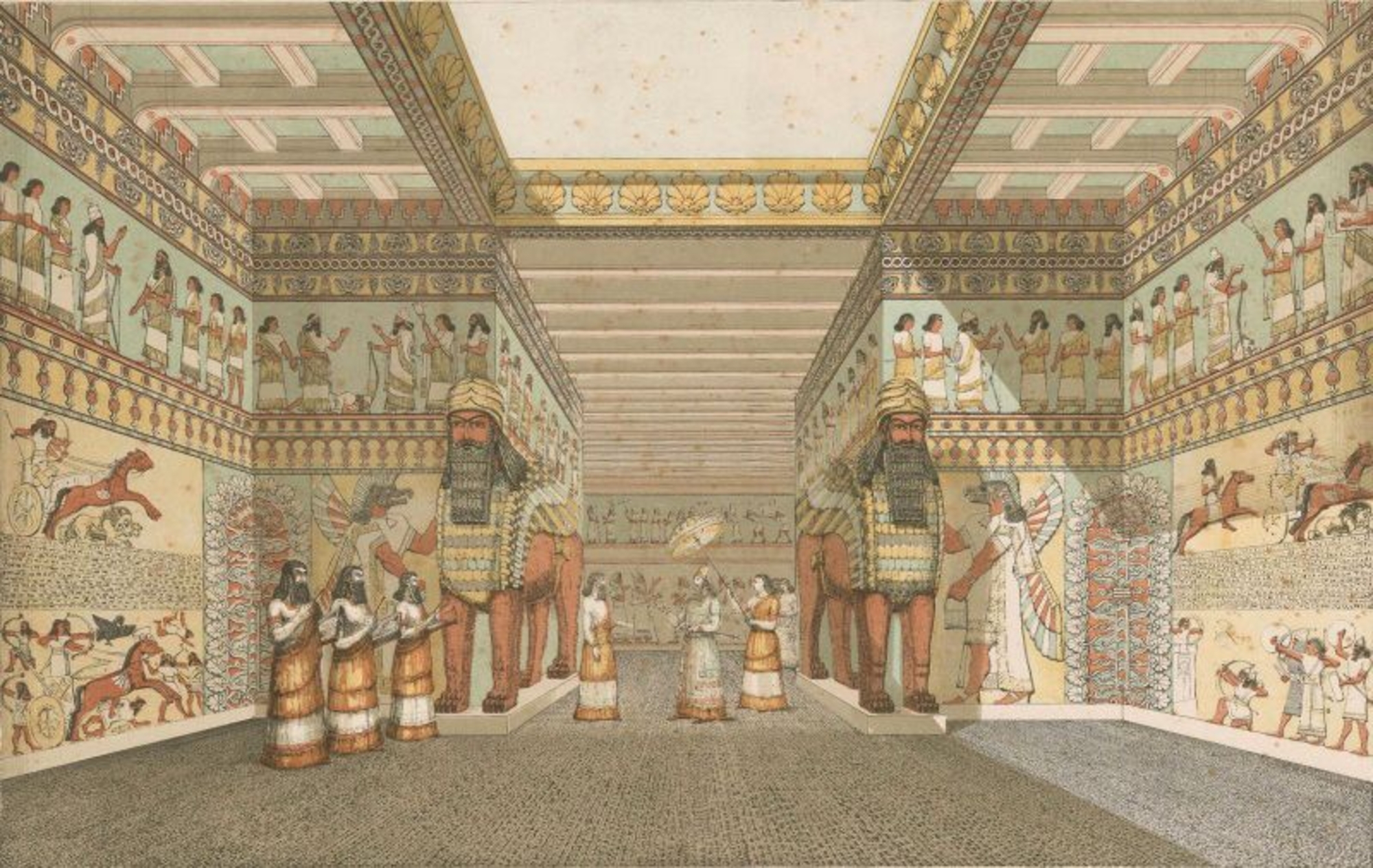
- Home
- The luxury of an Assyrian palace
- Vanished decorations
- Metal decors
Precious metal plates
Sargon's inscriptions state that the doors were made from precious woods such as cedar and cypress and plated with bands of copper. This is confirmed by the discovery of cedarwood doorposts plated with bronze bands at the entrance to buildings in the temple quarter. They depict figurative scenes of the king grasping bulls by the horns, processions of animals, and plants. The bands were fastened to the wood with nails of which the heads rested decoratively in rosette-embossed holes to mask the technical details. This system was also used on the bronze door bands at Balawat, east of Mosul.
Artificial palms
Other plates suggest the room was also decorated with artificial palms. Archaeologists have found gold and bronze leaves resembling palm fronds which may have been fastened as plates to the wood. Similar decorations were found from the early 2nd millennium BCE, for example, in the Throneroom Courtyard of the palace of Mari. The date palm was an important symbol of fertility and abundance in Mesopotamia.
Bronze statues
Although the Khorsabad inscriptions mention bronze statues, none have been found. They may have been looted or recovered by Sennacherib when he transferred the capital to Nineveh. A small bronze statue of a roaring lion was found near Facade L (Courtyard I). Although it has a ring on its back, it is probably not a weight because it was attached to the paving. Its exact function is unknown.


